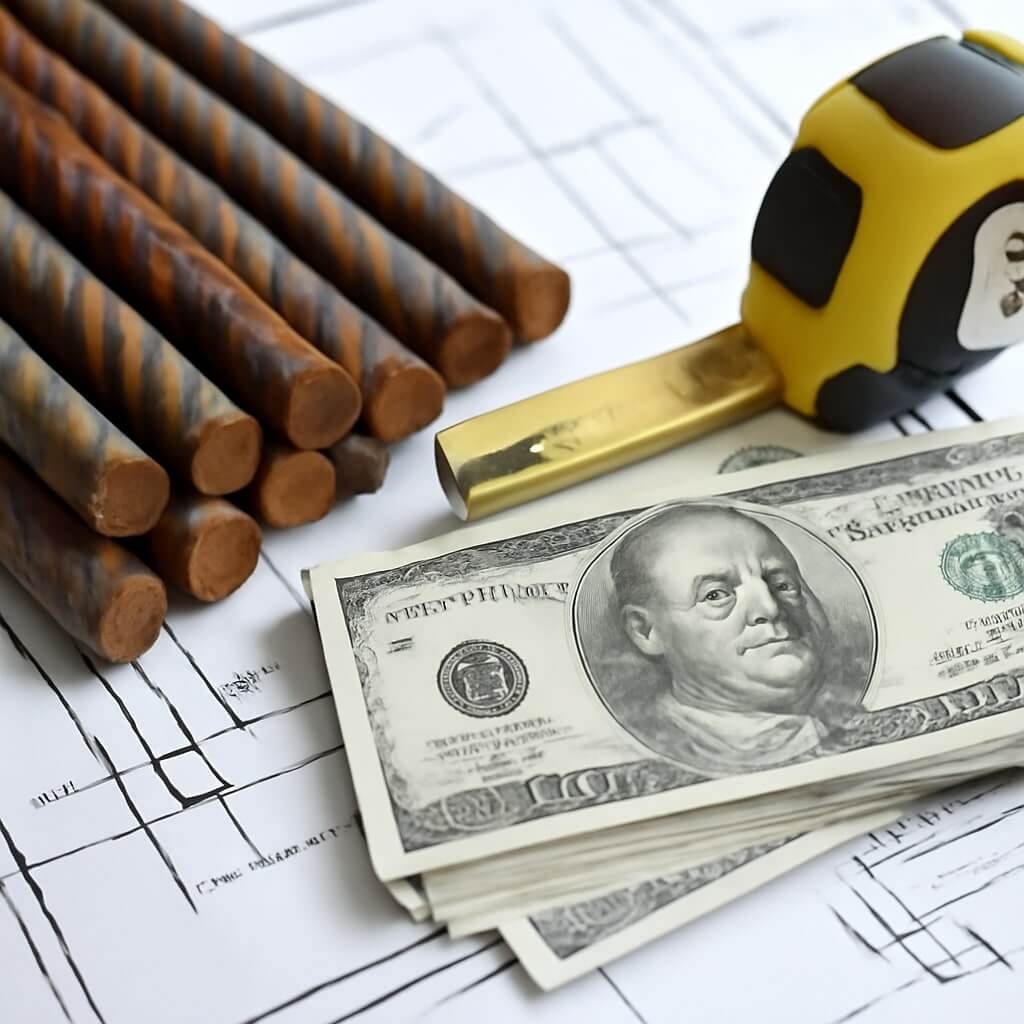Concrete reinforcement costs play a vital role in construction budgeting and project planning. Understanding these costs can help builders, contractors, and property owners make informed decisions, avoid unexpected expenses, and ensure the structural integrity of their projects. This guide dives deep into everything you need to know about concrete reinforcement costs—from the types of reinforcement to factors influencing price, and tips to optimize expenses.
What Is Concrete Reinforcement?
Concrete reinforcement refers to materials added to concrete to enhance its strength, durability, and load-bearing capacity. Since concrete is strong in compression but weak in tension, reinforcement materials compensate for this weakness.
Types of Concrete Reinforcement
- Steel Rebar (Reinforcing Bars): The most common, available in various grades and sizes.
- Welded Wire Mesh: Steel wires welded together in a grid, often used in slabs and pavements.
- Fiber Reinforcement: Synthetic or steel fibers mixed into the concrete to improve crack resistance.
These materials serve the purpose of distributing stress, preventing cracking, and increasing the lifespan of concrete structures.
Why Concrete Reinforcement Is Essential
Without proper reinforcement, concrete structures are prone to cracking, deformation, and eventual failure. Reinforcement ensures:
- Improved Structural Strength: Reinforcement supports tensile forces that concrete alone cannot withstand.
- Enhanced Durability: It prolongs the service life of structures by reducing damage from environmental stressors.
- Increased Safety: Properly reinforced concrete minimizes the risks of collapse or damage under load.
- Cost-Effectiveness in the Long Run: Though it adds upfront cost, it reduces repair and maintenance expenses.
Key Factors Influencing Concrete Reinforcement Costs
Several elements affect the overall cost of concrete reinforcement. Understanding these factors helps in accurate budgeting.
Material Quality and Type
Material choice significantly impacts costs. For example:
- Rebar Grade: Higher-grade steel rebars cost more but offer better strength.
- Mesh Type: Welded wire mesh varies in wire thickness and spacing.
- Fiber Reinforcement: Synthetic fibers may be more expensive but offer easier installation.
Labor and Installation Costs
Labor is a major cost driver:
- Skill Level: Skilled workers demand higher wages but ensure quality.
- Complexity: Intricate designs or tight spaces increase labor time.
- Equipment: Specialized tools may be necessary for cutting and placing reinforcement.
Project Size and Scope
Large-scale projects typically enjoy economies of scale but require more materials and labor overall.
- Volume of Concrete: More concrete means more reinforcement material.
- Structural Complexity: Complex geometries demand precise reinforcement placement.
Geographic Location and Market Variability
Prices for materials and labor fluctuate by region due to:
- Local Supply and Demand
- Transportation Costs
- Regional Labor Rates
Common Types of Concrete Reinforcement Materials
Let’s explore the most frequently used reinforcement materials and their cost implications.
- Steel Rebar: Dominant choice due to strength and reliability.
- Welded Wire Mesh: Cost-effective for slabs and pavements.
- Fiber Reinforcement: Growing in popularity for crack control and ease of mixing.
How to Estimate Reinforcement Quantities
Accurate estimation is crucial for budgeting:
- Blueprint Review: Identify reinforcement requirements.
- Calculation Methods: Use formulas or software tools based on concrete volume and design specs.
- Waste Factor: Include extra material for cutting and errors (typically 5-10%).
Average Cost Breakdown of Concrete Reinforcement
Breaking down costs provides clarity:
| Cost Element | Percentage of Total Cost | Description |
|---|---|---|
| Materials | 50-65% | Steel rebars, mesh, fibers |
| Labor | 25-40% | Installation, cutting, tying |
| Overhead & Profit | 10-15% | Contractor margins, equipment rental |
Cost-Saving Tips Without Compromising Quality
Even with tight budgets, quality shouldn’t be sacrificed. Consider:
- Bulk Purchasing: Discounts on larger material orders.
- Design Optimization: Simplify reinforcement layouts.
- Alternative Materials: Use fiber reinforcement where appropriate.
- Efficient Labor Scheduling: Reduce idle time and rework.
Environmental Impact and Cost Considerations
Sustainable practices can affect costs positively and negatively:
- Recycled Steel: May reduce material costs and environmental footprint.
- Long-Term Savings: Durable reinforcement lowers repair costs.
- Energy Use: Consider embodied energy in materials.
Innovations in Concrete Reinforcement and Their Costs
Modern advancements bring new options:
- Fiber-Reinforced Polymers (FRP): Corrosion-resistant but more expensive.
- Corrosion-Resistant Bars: Longer lifespan in harsh environments.
- Self-Healing Concrete: Still emerging but promising cost savings.
Common Mistakes That Increase Reinforcement Costs
Avoid these pitfalls:
- Over-Design: Excess reinforcement increases costs unnecessarily.
- Poor Planning Leads to wastage and rework.
- Ignoring Local Codes: Results in costly adjustments later.
Frequently Asked Questions (FAQs)
1. What is the average cost per ton of steel rebar?
The average price ranges between $600 and $900 per ton, depending on grade and location.
2. How much does labor typically add to reinforcement costs?
Labor can add 25% to 40% of total reinforcement costs.
3. Are fiber reinforcements more expensive than steel rebar?
Fiber reinforcements often have a higher material cost but reduce labor and installation time.
4. How can I reduce concrete reinforcement costs without compromising safety?
Optimize design, buy in bulk, and choose appropriate materials based on structural needs.
5. Is welded wire mesh suitable for all concrete projects?
It’s best for slabs and pavements but less ideal for heavily loaded structural elements.
6. How do geographic factors affect reinforcement costs?
Material availability, labor rates, and transportation costs vary regionally, impacting prices.
Conclusion: Making Informed Decisions on Reinforcement Costs
Concrete reinforcement is an indispensable part of construction, influencing both the safety and longevity of structures. By understanding the types of reinforcement, factors influencing costs, and ways to optimize expenses, stakeholders can better plan budgets and achieve durable results. Keeping abreast of innovations and environmental considerations also prepares builders for future challenges and opportunities.




